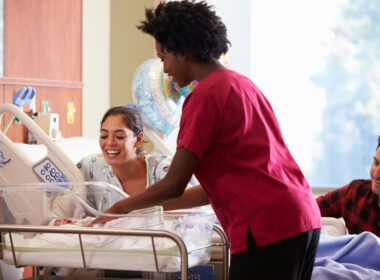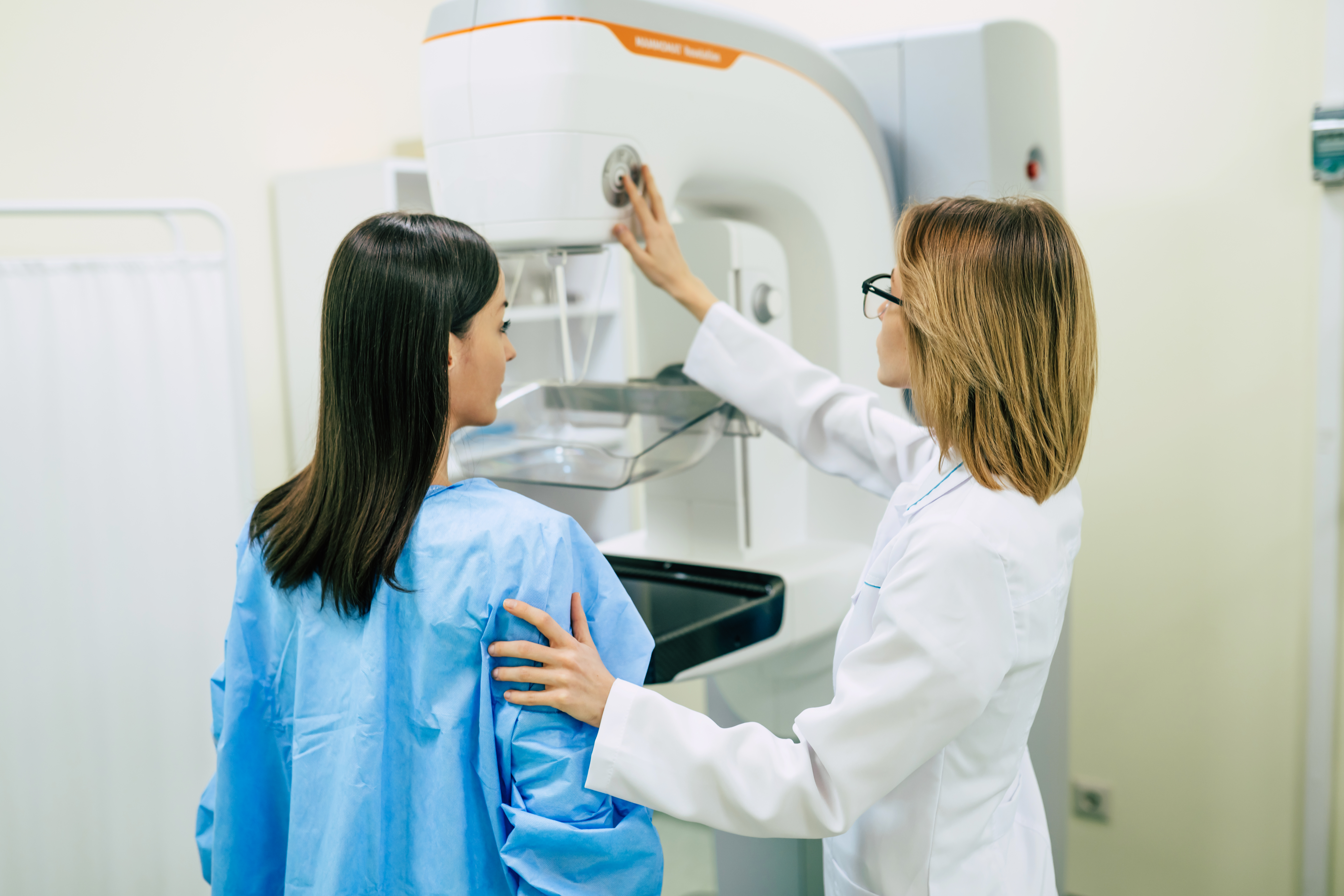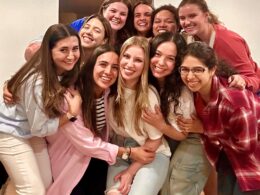In the 1980s, Leslie Carol Botha taught basic fertility awareness charting to teen girls (13-17 year-olds) at eight different restorative care homes for at-risk girls. A typical girl in the program had been a victim of sexual assault, ran away from home, used drugs and alcohol and ended up in jail. In working with these girls, Ms. Botha made an amazing discovery: teens who are taught fertility awareness and how to chart their cycles can regain control of their life.
Here is what she found out: for 90% of the girls in the program who had ended up in jail, it happened during the premenstrual phase of her cycle, that monthly darkness that Ms. Botha calls “falling down the rabbit hole”: increased anger, disruptive and self-destructive behaviors, suicidal ideation, and drug and alcohol cravings.
Improving teenage mental health with fertility awareness
Ms. Botha engaged the girls in a comprehensive menstrual health education program that included tracking their cycles as an art project, complete with colorful markers and stickers.
“The data I walked away with was mind-boggling,” she reported. Generally, more stickers and bright colors are seen early in the cycle, followed by a plunge into darkness upon reaching the eight days on each side of the start of the period.
“No matter the girl, her background the type of abuse she endured, her weight, or body image,” Botha writes, “they all fell down what I call the ‘rabbit hole’ in their mind.”
These young women hadn’t been equipped with an understanding of the hormonal shifts in their cycles and how these changes were driving their moods and behaviors. After three months of charting in this rudimentary fashion, the girls started noticing clear patterns emerging from their charts, and they became aware of that monthly “rabbit hole.”
In learning about their bodies through fertility awareness charting, these girls became empowered and in control, Ms. Botha reported. Mindful self-awareness and the understanding that such phases are normal (and only phases) made all the difference in their ability to handle them. Ms. Botha noted also that she referred to the class in her own mind as “abstinence through empowerment.”
Since then, Ms. Botha has become an internationally recognized expert on women’s hormones and behavior. Her work and research focus on the significance of the hormone cycle and its profound relationship to a woman’s psyche. Botha’s 30 years of research demonstrate how hormone fluctuations in the menstrual cycle affect women’s physical, mental, and emotional well-being.
Teen STAR: Empowering teens with knowledge of their fertility
For over 30 years, another organization has taken this concept beyond an experiment and into a full-blown curriculum. Teen STAR is also an “abstinence through empowerment” education program: evidence-based and internationally renowned, Teen STAR instructors teach teen girls in middle and high school about fertility awareness, their cycles, and how to chart them—and they have successfully implemented the program in schools all over the world.
Dr. Hanna Klaus, founder of Teen STAR, explained to me the beneficial change evident in girls who go through the program:
“We have found that it takes three cycles on average for girls to own their fertility. One of the process steps is that when they come to know their cycle, and the length of their luteal phase, they will know exactly when to expect their period. When that happens their body is talking to them and they are in charge. At that time they often move easily from peer pressure to making their own decisions, they move away from group pressure if the group proposes something they disagree with.”
“Puberty is such an important time in a girl’s life,” adds Dr. Klaus. “She has to come to terms with her changing body as it signals her emerging womanhood. Understanding and valuing one’s sexuality and fertility rather than suppressing it with hormonal contraception is empowering.”
One of the documented outcomes of Teen STAR’s work is the much lower likelihood for these girls to engage in premature sexual activities. The program was evaluated by ChildTrends, a leading U.S. nonprofit research organization, which reported “that this program is effective in reducing the rate of pregnancy, delaying the onset of sexual activity, decreasing sexual activity in sexually-active youth, and improving attitudes towards abstinence, compared with students in the no-treatment groups.”
In a 2001 study presented at Pennsylvania State University, Teen STAR researchers analyzed the outcome data from the anonymous exit questionnaires from the 1998-2000 Teen STAR programs in the United States [1]. The Teen STAR researchers concluded that teaching adolescent girls how to track their fertility patterns had a positive correlation not only with maintaining virginity, but also with discontinuing sexual activity (or, as the study authors put it, “a return to chastity.”) They also noted that failure to discontinue sexual activity was linked to the use of contraceptives.
Due to the success of the program, the authors believe that the Teen STAR approach can be a powerful tool in reducing both teenage pregnancies, and teenage STIs. They also saw an increased level of maturity among many of the participants. As lead author Dr. Klaus describes, “I have also learned that instruction in fertility awareness enables the adolescent to come to a new and deeper understanding of what it means to be a woman. Developing a healthy feminine identity and full acceptance of ones’ sexuality is part of adolescent development.”
Teaching teens fertility awareness with Teen STAR, all over the world
Similarly, a 2003 study conducted at a high school in Santiago, Chile, and published in the Journal of Adolescent Health, found that education with the Teen STAR program was correlated with significantly lower rates of teenage pregnancy (when compared to the control group of teens who were not enrolled in Teen STAR) [2]. The impetus for the study was the high level of teenage pregnancy in Chile, and the fact that “greater sexual involvement by increasingly younger teenagers leads to unintended pregnancies.”
The authors further noted that “although oral and other contraceptives are effective pregnancy prevention methods, they have a scant impact on this age group. It is necessary, as a consequence, to provide useful teenage sex education programs. Programs aimed at delaying the start of sexual activity have proved effective in terms of modifying adolescent sexual behavior. They promote a person’s own sense of worth, together with free and informed decision-making, and appear to produce an impact on adolescents. The application of a program such as Teen STAR, which embraces all aspects of human behavior, leads to satisfactory outcomes, including the fivefold reduction in pregnancy rates observed in our study.”
Given that this particular study was prospective, controlled, and randomized, these results are particularly compelling. The study authors therefore concluded that “the abstinence-centered TeenSTAR sex education intervention was effective in the prevention of unintended adolescent pregnancy.”
Teen STAR has been successfully implemented in other countries across the globe. Currently, there is an ongoing study assessing a similar intervention for teenage girls in Australian schools [3].
Here are even more powerful changes reported by Teen STAR teachers from 17 different countries:
- Students can be themselves, become more mature and self–directed.
- It moves girls from being victims of their hormones to being in control.
- It encourages students to think ahead and to make decisions ahead of crisis.
- It enhances the transition from middle to late adolescence, thereby enhancing students’ level of ego development.
- It affirms the students’ right to know about their own sexuality and helps them find answers to their questions.
Teaching teens to chart is better for their brains, bodies, and self-esteem than birth control
Just as natural hormones drive moods and behaviors, so do the synthetic, cycle-suppressing ones in hormonal contraceptives generally used to “treat” hormonal fluctuations in young girls. While knowledge empowers, young women on the pill are 80% more likely to be in treatment for depression. During the teen years, a young woman should be developing her self-knowledge and self-image, and the brain is undergoing major developmental changes in structure and function. In addition to increasing levels of anxiety, depression, and suicidal ideation in young girls, how else might birth control drugs be warping this process?
Putting girls and women in touch with their cycles puts them in touch with the power of their fertility and brings the most unexpected results. Teen STAR proves that true mindfulness for girls a woman includes the awareness, and understanding, and appreciation of their natural fertility.
Other resources for teen fertility awareness education
The Couple to Couple League realizes that mothers are in a special position to engage their daughters about the gift of their fertility. Their Mother / Daughter program lets you choose the resources you feel would be the best to communicate with your daughter about fertility awareness.
The Cycle Show is an educational, interactive, multi-media, fertility awareness workshop for young girls.
The FEMM App helps girls understand their reproductive health in all its physical and emotional complexity.
Reference List:
[1] Klaus H, Dennehy N, Turnbull J. Undergirding Abstinence Within a Sexuality Education Program. Presentation presented at the: 2001; Teen Pregnancy Prevention Conference Pennsylvania State University, State College, PA. [2] Cabezón C, Vigil P, Rojas I et al. Adolescent pregnancy prevention: An abstinence-centered randomized controlled intervention in a Chilean public high school. Journal of Adolescent Health. 2005;36(1):64-69. doi:10.1016/j.jadohealth.2003.10.011 [3] Roux F, Burns S, Chih H, Hendriks J. Developing and trialling a school-based ovulatory-menstrual health literacy programme for adolescent girls: a quasi-experimental mixed-method protocol. BMJ Open. 2019;9(3):e023582. doi:10.1136/bmjopen-2018-023582When this article refers to fertility awareness methods (FAM), or natural family planning (NFP), we are referring to Fertility Awareness-Based Methods, evidence-based methods of cycle charting which can be used as effective forms of natural birth control when learned by a certified instructor.
This article was originally published on March 18, 2017 as written by Anna Migeon, Co-Founder of Natural Womanhood. It has since been updated by Natural Womanhood to offer more resources. Last updated October 10, 2020.
Additional Reading
Teens and irregular periods: What’s normal–and what’s not (Part I)
Teens and irregular periods: What’s normal—and what’s not (Part II)
Should you put your teenage daughter on hormonal birth control?
Busting the 4 Biggest Myths about Teens and Fertility Education
Why We Need Fertility Awareness in Schools
Who Will Teach Fertility Awareness To My Daughters?
How to Talk About Cycles with Your Kids
How a Lack of Fertility Awareness Relates to Infertility Rates
Study Shows Link Between Teen Birth Control Use and Adult Depression
DID YOU LIKE THIS STORY?
Please share with others on Facebook, Twitter, or Instagram. Also please consider making a donation to Natural Womanhood support articles like these. You can easily donate at www.naturalwomanhood.org/donate












RIGHT ON, Anna!
I have seen to it that our five daughters all learned fertility awareness around their 16th birthday, and have witnessed all the positive effects that you list! Convinced that this is the “missing gap” between abstinence-only programs and “preventative” (i.e. contraceptive) programs, I became certified as a TeenSTAR trainer myself. Fertility LITERACY is the way to TRUE “reproductive justice” for all women from all walks of life; safe, effective and FREE.
Suzanne, R.N.
Charting when I was a teen was astoundingly useful for me, but ultimately, I did need birth control to bring my PMDD down to the point that I could function as a member of society. My grades went up because I could actually attend school for the full 4 weeks a month, instead of being bed ridden by the week of hell every single month.
For girls who don’t have that extra burden, I highly recommend charting. When we know that it’s our hormones driving our feelings (not controlling or causing them, just pushing them), it’s so much easier to be in control of ourselves.
I too had severe and mostly untreated PMDD as a teen, and into adulthood. In the past year I found that taking a high dose of inositol daily alleviates much of my PMDD. There are studies on this you can easily find. Inositol is a B vitamin with a low risk of side effects – you just decrease your dose to one your body can tolerate. Not sure if PMDD is still an issue for you, but it’s very common and I hope this information can be useful to someone.
Thank you for this constructive comment. I had many doubts if “birth control…” is necessary to anybody to “…function as a member of society”
🙂
Well, when I was a teen I took oral contraceptives briefly for my PMDD so that I wouldn’t have long bouts of uncontrollable crying, chopping off my hair, etc. You can only do what is available to you at that time and for the short time I had access to them, oral contraceptives were very helpful.
Such an interesting research! 🙂 Especially the color aspect. It is amazing to read about it now because we started a similar experiment a few months ago. Our users instantly save on their devices what theme color they have for each day and will be able to see the record with some delay (to keep color choices independent).
https://play.google.com/store/apps/details?id=clayscribe.donnamobile
DonnaMobile – fertility tracker
https://uploads.disquscdn.com/images/9fb469c5bef64f9f499f04bbf484074cf6fe416ea397ceedab0e9c321890ee00.png
This is amazing in so many ways. One way it is not amazing is using the word “abstinence” even though their phrase also contains the word “empowerment”. Why must you try and control the outcome of empowering young women? Why not just leave it open ended and trust that for the most part, when you show them the tools for empowerment, they will make the best choices for them, whether that includes abstinence or not.
Yes. Feeling like the abstinence agenda his riding on the coat tails of something really beautiful.
Where can I get a blank copy of this chart for my granddaughters?
We are mobile app for charting
https://play.google.com/store/apps/details?id=clayscribe.donnamobile
Mail us (donnamobileapp@gmail.com) with title “promo code” and tell us how many granddaughters you have. We will send you free codes for full DonnaMobile 🙂
do you have an app for mac?
Do you literally mean mac as desktop/laptop or maybe just apple mobiles (iPhone, iPad – using iOS)?
We decided to create Donna for mobiles because of their touchscreens and constant access to them. (So far only Android version is available but we plan to release iOS as soon as it is possible).
Let us know why you prefer mac if it is so. (You can mail us directly – we are highly interested in your suggestions. 🙂
Hi hi, iphone or ipad is what i meant.
I agree. There is so much good happening here, but is that a guise? These “rabbit holes” and “plunges into darkness” are part of the huge “psych connection” that make us female. The body of any woman, physically begs to be paid attention to, pre menstral. This can be an intense reaction to anything the woman hasnt dealt with in her psych, or has deliberately stuffed away because she hasn’t found a safe place to express her self. Why use such diragatory language to describe something that is a part of being a woman? And in my opinion, a beautiful tool for staying in tune with the mind and body? Empowerment means loving yourself, and understanding the glorious workings of our cycles. Leave the negative labeling out of it.